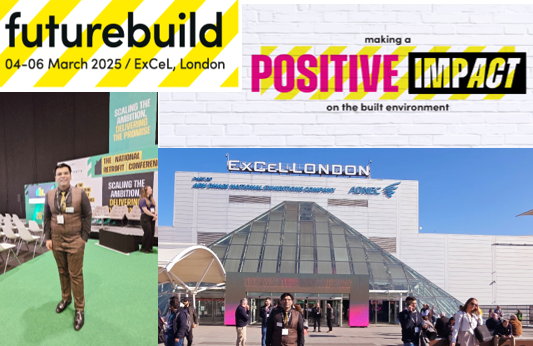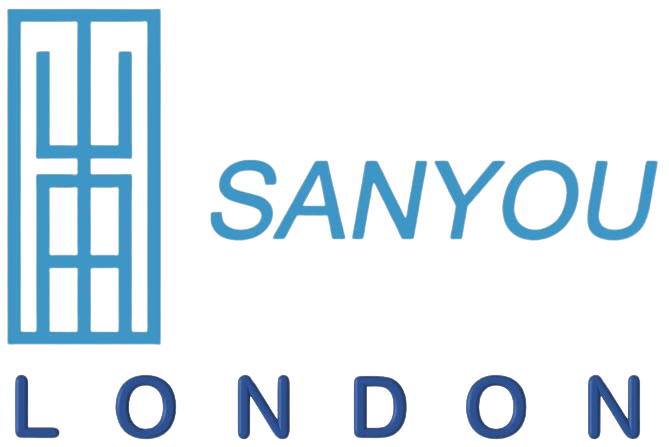
Futurebuild 2025, ExCeL London: Ultra-Slim 4 mm Vacuum Insulation (0.005 W/m·K) for Net-Zero Retrofit
Dates: 4–6 March 2025
Venue: ExCeL London
Represented by: Professor Saim Memon, CEO of Sanyou London
Product catalogue (VIW): https://sanyoulondon.com/wp-content/uploads/2024/12/VIW-Product-Catalogue-SL-V3.pdf
Video (VIW overview): https://www.youtube.com/watch?v=pTyjktuLUck&t=68s
What happened?
Sanyou London attended Futurebuild 2025 to engage specifiers, housing providers, contractors and distributors on vacuum-insulation energy technologies. While much of the show floor centred on familiar wood- and polymer-based insulants, conversations at our stand focused on how ultra-slim vacuum insulation can deliver deep energy savings without the bulk.
What set Sanyou London apart?
Feedback from meetings across estates teams, main contractors and housing associations was consistent: within the exhibition, there was no like-for-like alternative to Vacuum Insulated Wallpaper (VIW) combining ~4 mm overall thickness with an approximate thermal conductivity of 0.005 W/m·K (5 mW/m·K), as stated in Sanyou London product literature. The appeal was clear—net-zero-aligned performance in millimetres, not centimetres.
What is VIW and where does it help?
VIW is a thin internal wall insulation designed for occupied buildings where space, disruption and cost are tightly constrained.
- Space-saving: preserves usable floor area and avoids major trim or service relocations.
- Fast, tidy retrofit: suited to staged room-by-room upgrades; DIY-friendly handling reduces install overheads.
- High performance: very low effective conductivity targets rapid U-value improvements in hard-to-treat homes and public buildings.
- Net-zero delivery: cuts heating and cooling loads, easing peak demand and supporting estate carbon plans.
How does it compare with conventional insulation?
Conventional fibrous or plastic-foam products typically require much greater thickness to reach comparable thermal resistance. VIW achieves meaningful heat-loss reduction at a fraction of the depth, making it practical where corridors, kitchens, heritage details or tight rooms limit build-up thickness.
Beyond interiors: the wider vacuum-insulation family
For external façades and modular assets, Decorative Integrated VIP (DVIP) offers a durable external wall solution with architectural finishes. Flexible VIP formats address reveals, services and curved geometries that defeat rigid panels. Together, these formats provide a toolkit for whole-building thermal upgrades.
What did the market ask for?
- Proof and paperwork: specifiers requested technical files, installation guidance and performance evidence aligned to UK expectations.
- Compliance: procurement leads highlighted UKCA/standards alignment as the gateway to framework adoption.
- Pilots: councils and housing associations expressed interest in pilot deployments to evidence energy savings and user comfort before scale-up.
A candid observation from the floor
Futurebuild showcases innovation; however, large portions of the market remain anchored to legacy materials. Education plus demonstration will be key to mainstreaming millimetre-scale, high-performance insulation in Britain. Sanyou London is committed to that transition and grateful for the strong, positive feedback received throughout the event.
Work with Sanyou London
- Spec sheets, samples and pilots: VIW for internal wall upgrades; DVIP and Flexible VIP for façades, reveals and constrained details.
- Partnerships: housing associations, local authorities, developers, contractors and distributors seeking fast, space-efficient energy savings.
Contact: Visit www.sanyoulondon.com or reach Sanyou London Customer Service.
For policy and programmes: DESNZ and public-sector teams exploring net-zero retrofit are welcome to discuss evidence frameworks and pilots.
#VacuumInsulation #Innovation #SustainableBuilding #NetZero #ConstructionIndustry #EnergyEfficiency #FutureOfInsulation #Futurebuild2025 #Sustainability #Impact #BuiltEnvironment #DESNZ #EnergyGovUK
Share

